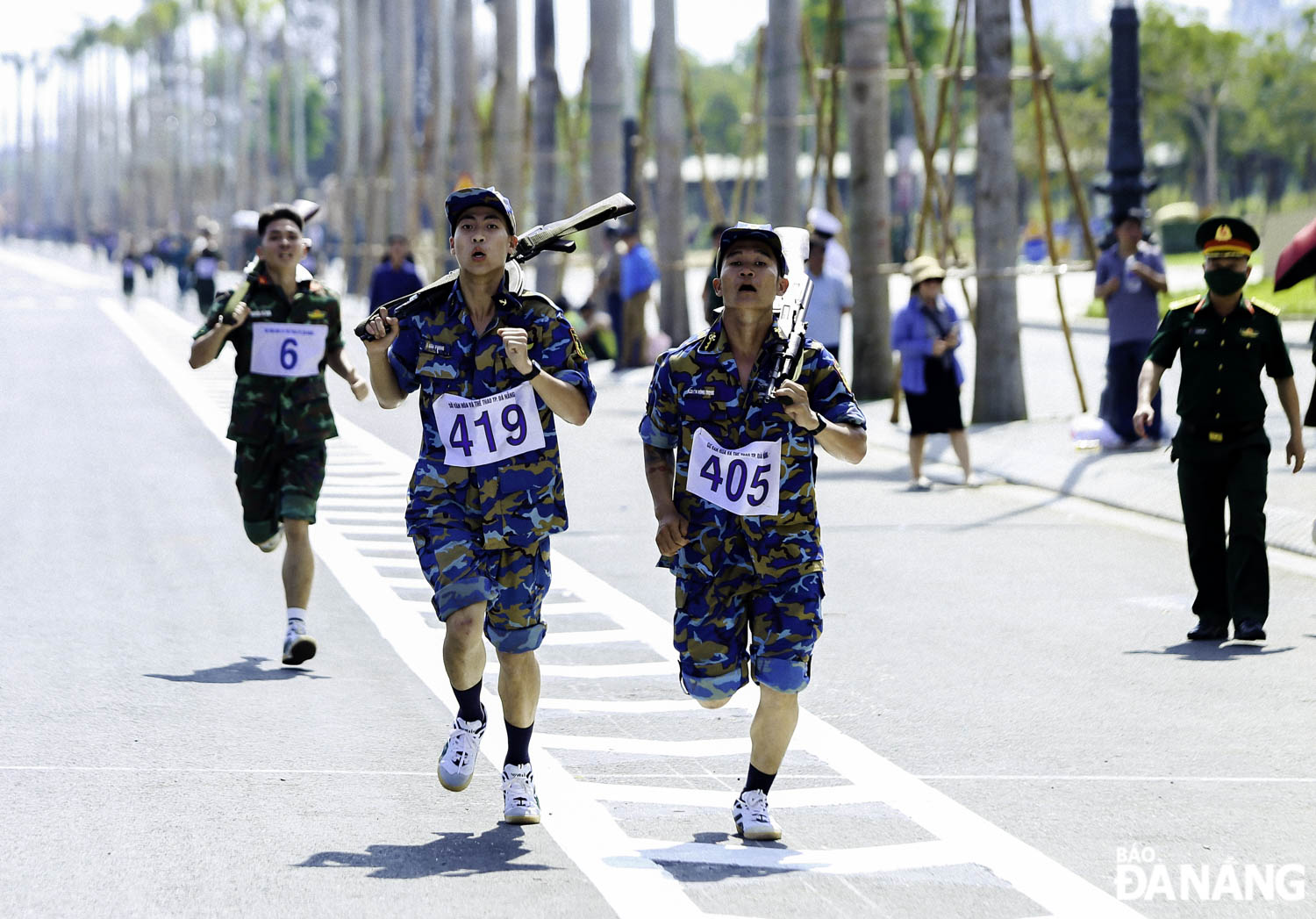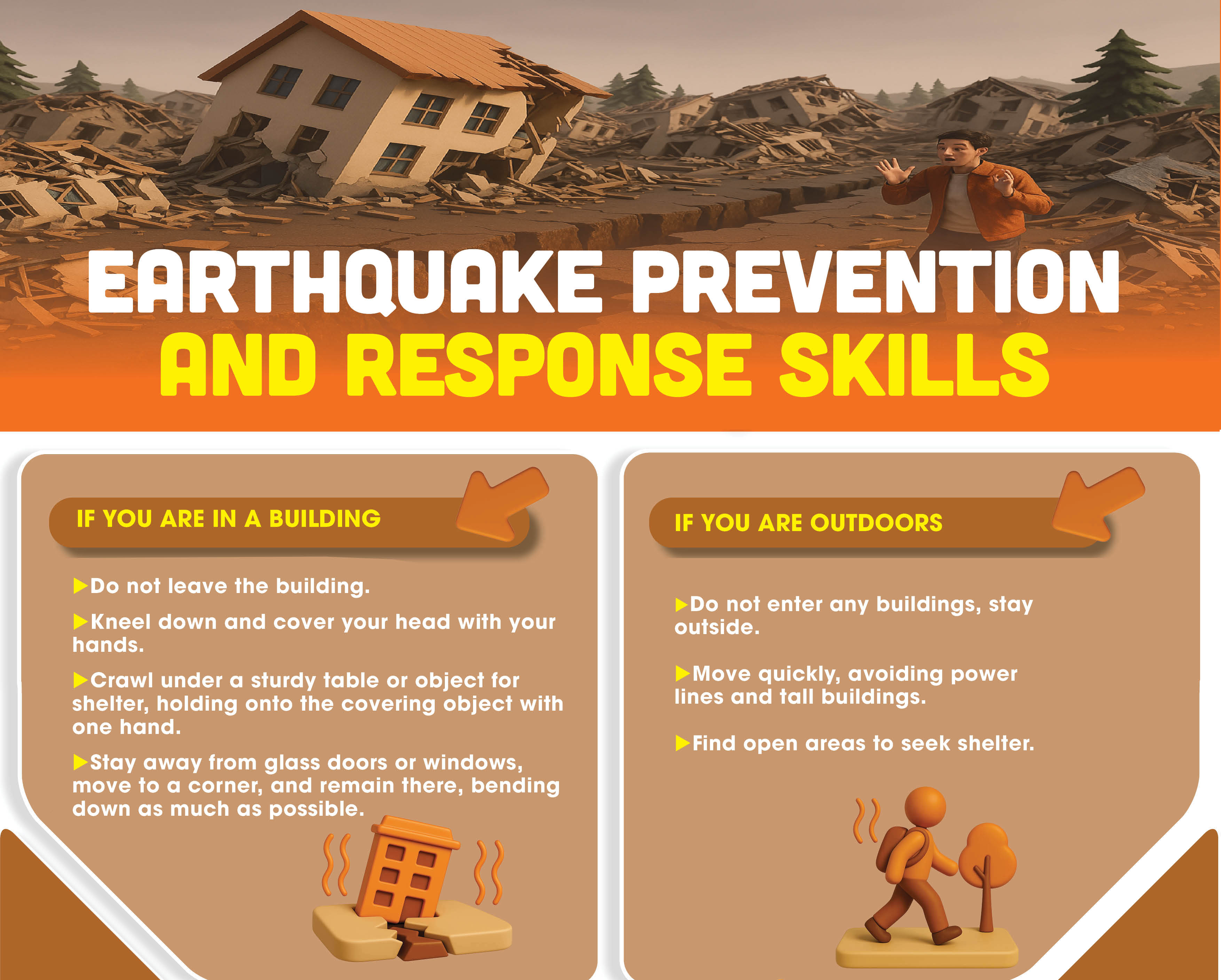Stories of flood mitigation measures
Located to the south of the majestic Hai Van Mountain, the Cu De River meanders like a soft ribbon through communes in Hoa Vang District and the wards of Hoa Hiep Nam and Hoa Hiep Bac in Lien Chieu District, before flowing into the Nam O estuary. Known for its scenic beauty, the Cu De River has long been a source of poetic inspiration and irrigation for local farmlands. However, the river also poses a serious threat to those living along its banks during the rainy and stormy seasons.
 |
| Mr. Truong Son invents a flood-resistant raft by using four plastic drums as floats. Photo: DHL |
Living with floods
As we journeyed upstream along the Cu De River from Nam O, Hoa Hiep Bac Ward, the early winter breeze and scent of acacia blossoms filled the air. Workers could be seen harvesting the acacia trees, leaving the once-green hills bare. This sight reminded us of the landslides that occurred in northern mountainous regions following the third typhoon of the year.
Arriving at the Nam Yen Village where severe floods occur every year, we found that the rainy season had only just begun, yet parts of the inter-communal road were already submerged following heavy rainfall on September 18 due to a tropical depression. The water from the river rose swiftly, inundating low-lying areas.
Pointing to the water-stained walls, Mrs. Nguyen Dang Thi Hanh from Nam Yen shared: "A few weeks ago, it rained, and the water came into the house, rising more than 30 centimetres. It floods here every year, but it was nothing compared to the great flood on October 12, 2022, when the water nearly reached the roof. Continuous heavy rains left over 80 centimetres of water – too much for anything to survive. Fortunately, we had a mezzanine floor; otherwise, we might not have made it. The river rose overnight, and we couldn’t save our belongings. Mud piled up half a metre inside the house after the water receded."
The memory of the 2022 flood still haunts Mr. Truong Son from Nam Yen. The water inside his home rose to three metres, and he only had time to ensure his family's safety.
In addition to household damage, local crops and livestock suffer greatly. The region is a sugarcane hub, and after floods, mud clings to the sugarcane, reducing the harvest by up to 70%. Banana trees, lush during the summer, become barren in the rainy season, unable to thrive due to the excessive water and storms.
Flood prevention from experience
After the catastrophic flood in 1999, only a few families relocated from dangerous areas. In 2009, the government built the Nam Yen Residential Area and relocated nearly 100 households from landslide-prone areas in two phases, in 2009 and 2010. Yet, in 2022, landslides continued in two locations, Hoc Gieng and Khe Dinh.
Residents living in these flood-prone regions rely on their experience to combat floods and storms. Many have built boats and floating rafts, such as Mr. Truong Son, who created a large raft from four plastic barrels.
"With this raft, I feel safer. When the water rises, I simply place wooden planks on top and put our belongings there. Floodwater comes in so quickly that it’s hard to save everything. To avoid losses, people now plant shorter-cycle crops instead of sugarcane or raise chickens instead of pigs," Mr. Son said.
People also keep up with weather updates, taking precautions to reinforce their homes and protect their families and assets. If severe weather is forecasted, residents near the Cu De River are prepared to move to safety.
According to Mr. Ho Tang Hoc, Head of Nam Yen Village, the village has around 500 households. Many have raised awareness of flood and storm prevention by building higher mezzanines for storage and buying boats and rafts. If a large storm is expected, the local authorities will notify residents to move to shelters at public buildings, churches, or schools, and take livestock to safety. The village has also drafted plans to deal with landslides and severe flooding, clearing nearly one kilometre of canals this year. The government also encourages residents to plant long-lasting hardwood trees instead of acacia to prevent landslides in the rainy season.
The Cu De River is a constant concern for those living along its banks, not just in Nam Yen but also in other nearby villages like Pho Nam, An Dinh, and Truong Dinh. When we arrived in Hoa Bac Commune, the local authorities were holding a flood and storm prevention meeting. This annual event aims to minimise damage during the rainy season.
Many useful solutions are drawn from practical experiences at these meetings, helping local authorities and residents better prepare. The top priority is to identify households at risk from landslides or flooding, especially those living in non-reinforced houses, and to propose relocation plans before disasters strike. Support is also provided to purchase essential supplies like raincoats, life vests, torches, and ropes. Social media and local radio systems play a key role in delivering timely updates and weather warnings.
Reporting by DOAN HAO LUONG - Translating by TRUC VY, VĂN QUANG








